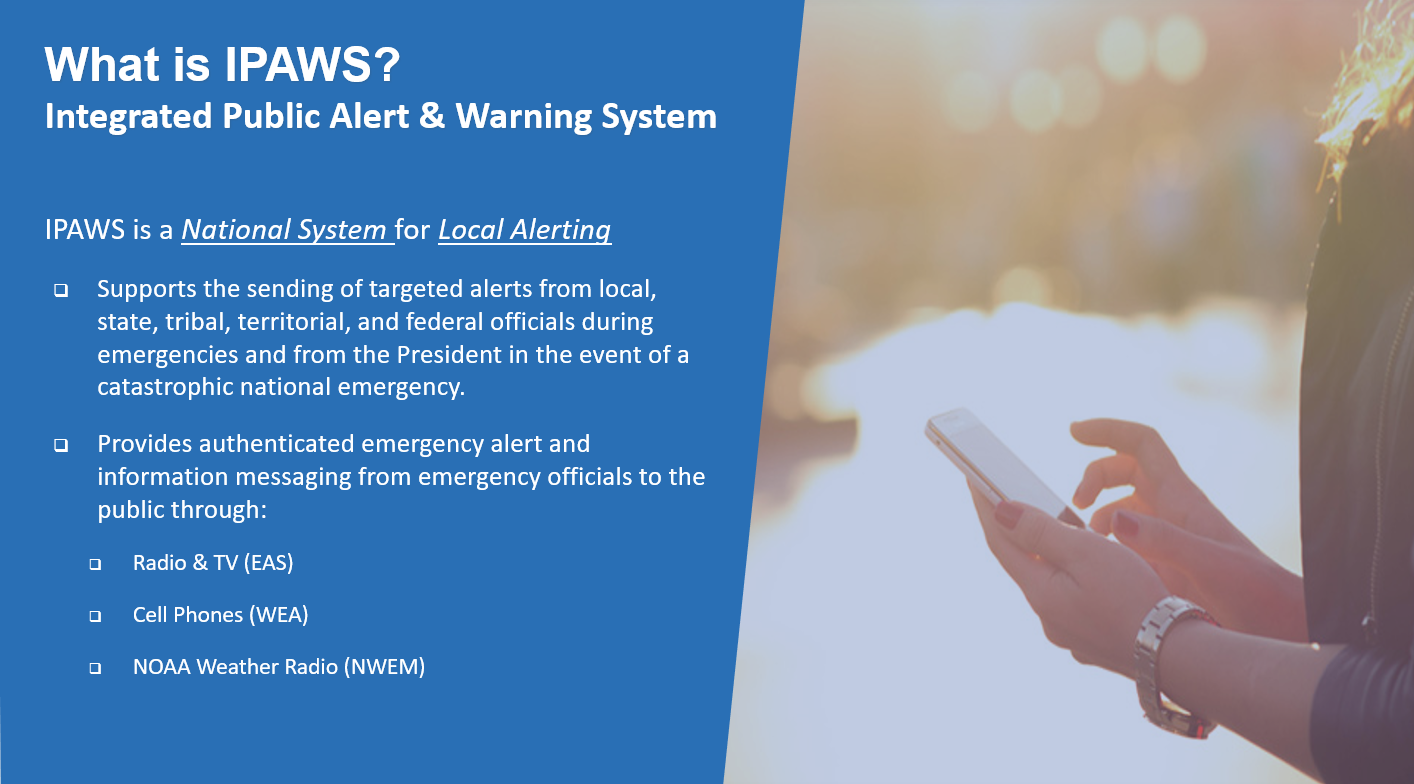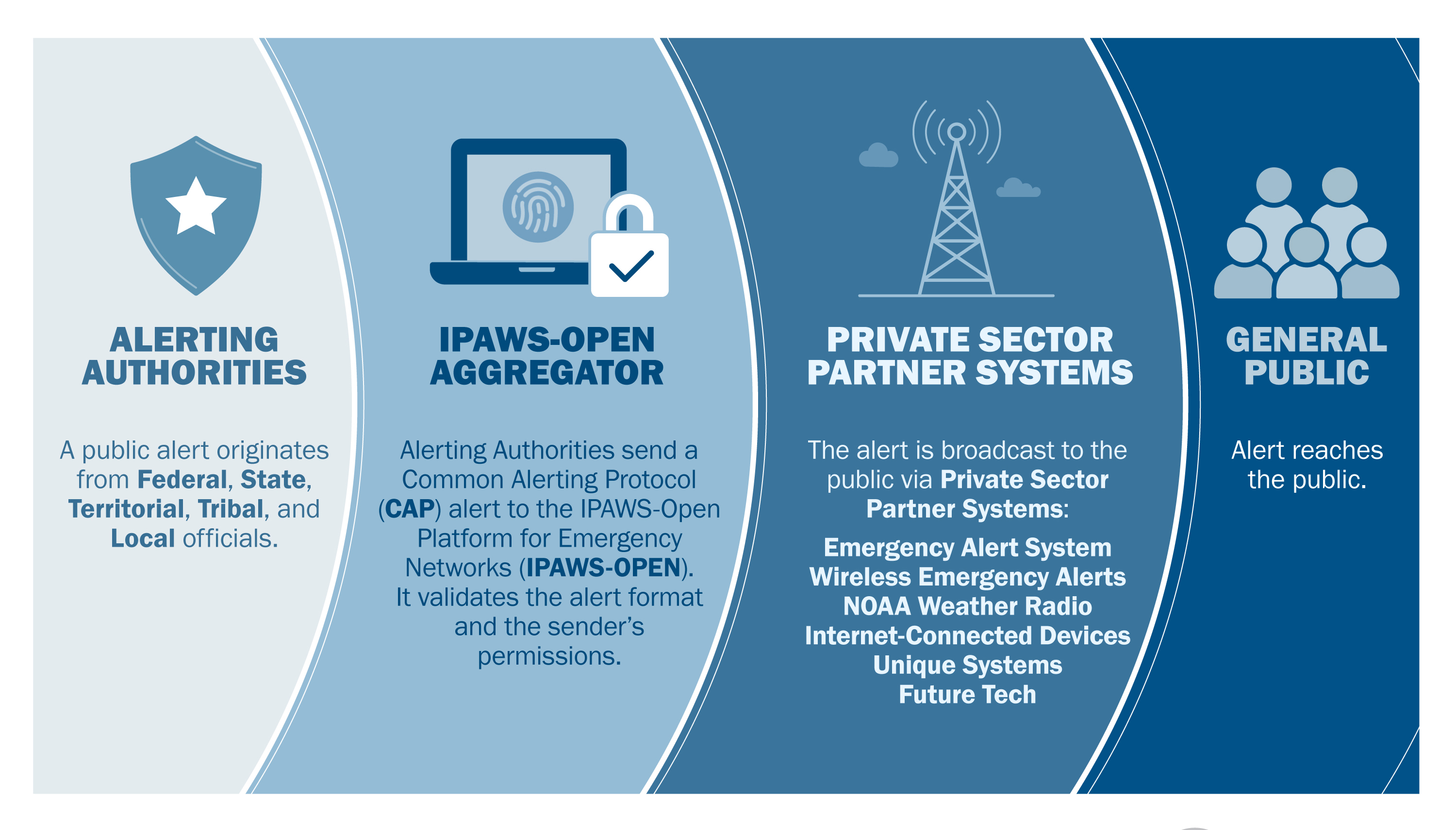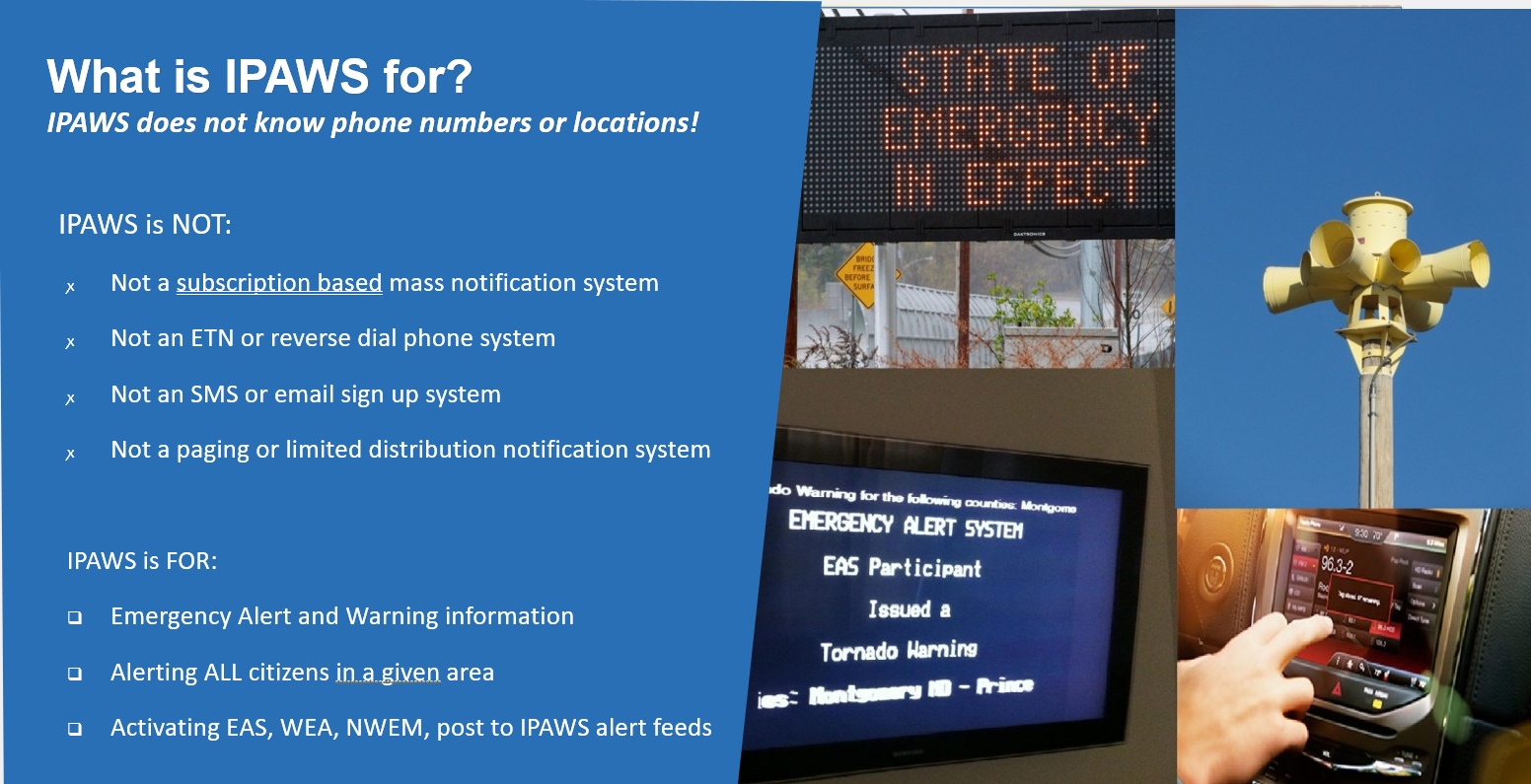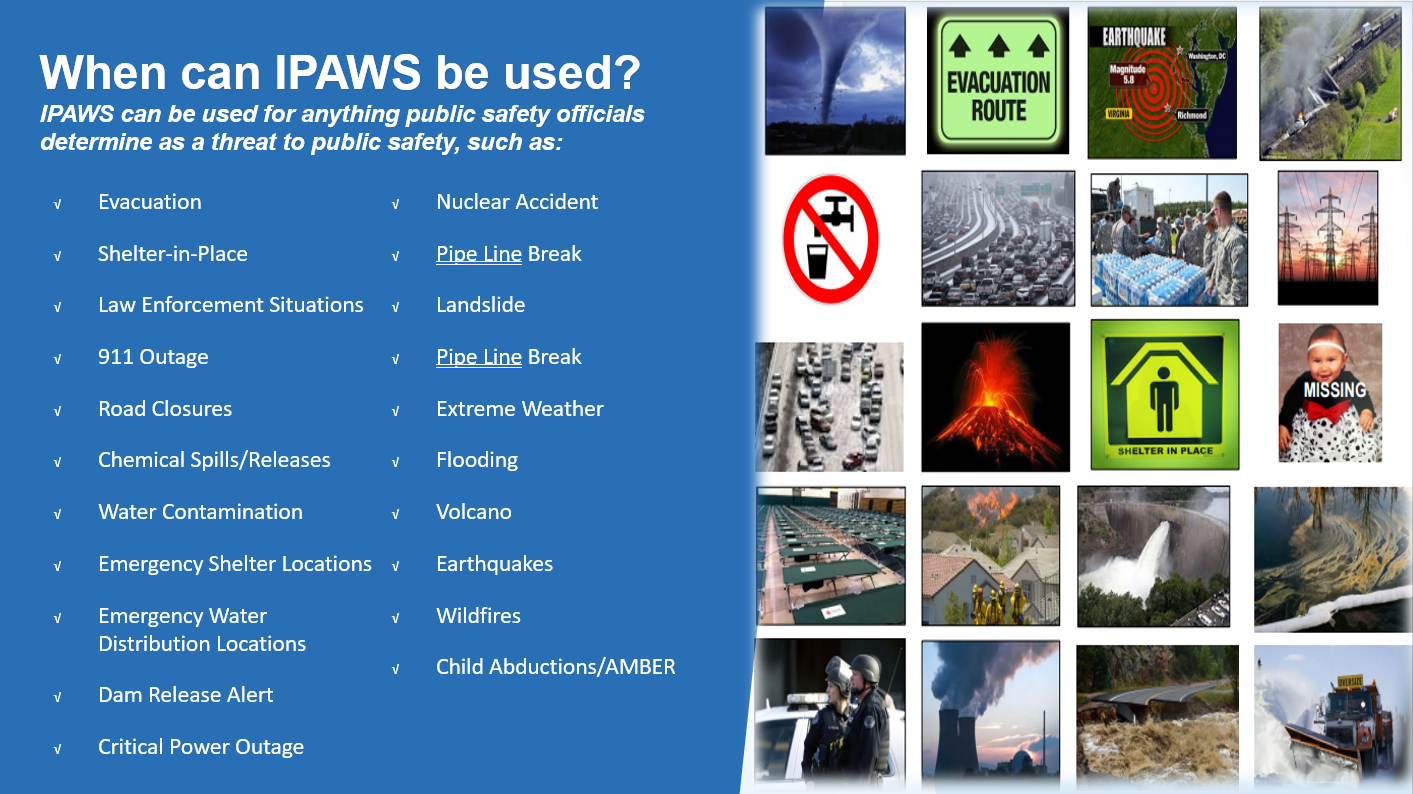What is IPAWS?
The Integrated Public Alert & Warning System (IPAWS) is FEMA's national system for local alerting that provides authenticated emergency and life-saving information to the public.
IPAWS sends alerts through mobile phones using Wireless Emergency Alerts, to radio and television via the Emergency Alert System, and on the National Oceanic and Atmospheric Administration's Weather Radio.

States, counties, local governments and tribes can apply for access to IPAWS and obtain a COG (Collaborative Operating Group) after signing an MOU with FEMA. For more information about this process, or to apply for access, you can visit FEMA's website.
IPAWS allows Alerting Authorities to write their own message using commercially available software that is Common Alerting Protocol (CAP) compliant. The message is then delivered to the Integrated Public Alert and Warning System, Open Platform for Emergency Networks (IPAWS OPEN), where it is authenticated and then delivered simultaneously through multiple communication pathways. Through IPAWS, one message is created to reach as many people as possible to save lives and protect property.
Utilizing multiple pathways for public alerts increases the likelihood that the message will successfully reach the public. IPAWS is structured to facilitate this functionality.

Communication Pathways
The Emergency Alert System (EAS) delivers alerts via AM, FM and satellite radio, as well as broadcast, cable and satellite TV.

Cell phones and mobile devices receive Wireless Emergency Alerts based on location, even if cellular networks are overloaded and can no longer support calls, text and emails.
The National Oceanic and Atmospheric Administration (NOAA) delivers alerts through NOAA Weather Radio.
Alerts are also available from internet service providers and unique system developers.
State, local, territorial, and tribal alerting systems such as emergency telephone networks, giant voice sirens, and digital road signs may also receive alerts from IPAWS-OPEN, and future alerting technologies and systems can easily be integrated into IPAWS.
IPAWS Governance
The Integrated Public Alert and Warning System was established under Executive Order 13407. IPAWS provides the capability to notify the public of impending natural and human-made disasters, emergency and public safety information. In a national emergency, the President may use IPAWS to communicate to the public as well. IPAWS delivers timely, geographically-targeted messages during emergencies to save lives and protect property through multiple communication pathways such as, the Emergency Alert System, Wireless Emergency Alerts, NOAA Weather Radio and other internet connected devices and services.
The IPAWS Modernization Act of 2015 calls for:
- Upgrading IPAWS to ensure the President can communicate to the public under all conditions.
- Establishing a subcommittee to the National Advisory Council composed of IPAWS stakeholders to expand collaboration and recommend improvements to the system.
- FEMA to submit annual performance reports.
The Act includes 19 additional system and implementation requirements, which FEMA is evaluating and estimating the resources necessary to fulfill “to the extent feasible.”
IPAWS Mission
IPAWS is guided by its mission to provide integrated services and capabilities to federal, state, local, tribal and territorial authorities that enable them to alert and warn their respective communities via multiple communications pathways.
The IPAWS PMO is also guided by FEMA’s mission of helping people before, during, and after disasters. Furthermore, IPAWS advances the 2018 - 2022 FEMA Strategic Plan and the agency’s strategic impe
ratives by building a culture of pr
eparedness, readying the nation for catastrophic disasters and reducing the complexity of FEMA.
IPAWS Vision
To provide timely alert and warning to the public in the preservation of life and property using the most effective means for delivering alerts that are available at any given time.
IPAWS Goals
- Create, maintain and evolve an integrated interoperable environment for alert and warning.
- Make alert and warning more effective.
- Strengthen the resilience of IPAWS infrastructure.
- Enhance the means for monitoring and measuring success.
- Develop an IPAWS office workforce that is well-trained and satisfied.
Federal, State, Local, Tribal and Territorial Partners
Federal Governance Partners are federal authorities responsible for national public alerts and warnings policies and regulations. They represent a large and unique segment of the emergency management community and the public. State, local, tribal and territorial public safety officials are designated within their level of government as an alerting authority responsible for communicating emergency alerts and warnings to the public.
FEMA supports our Tribal Government Partners to enable them to alert and warn their communities during emergencies to save lives and protect property. To enhance emergency preparedness of tribes, the agency:
- Supports nation‐to‐nation tribal relationships and recognizes the unique cross jurisdictional challenges they face with emergency management and public alerting.
- Collaborates with tribal governments to develop education and training curricula, guidance and technical support. Provides supplemental federal grant guidance for eligible public alert and warning activity expenses through the Tribal Homeland Security Grant Program.
- Works with FEMA’s Emergency Management Institute to deliver training to tribal emergency managers that explains IPAWS capabilities and benefits.
Legislative Government Partners are the Congressional committees that oversee IPAWS. FEMA submits periodic reports and delivers briefings with IPAWS implementation updates to the committees. FEMA conducted an interactive end-to-end IPAWS concept of operations demonstration for members of Congress and their staff at the United States Capitol Visitors Center.
Would you like to learn how to get started with IPAWS?
If your agency would like to apply for access to IPAWS, please reach out to us and we would be happy to walk you through the process.

